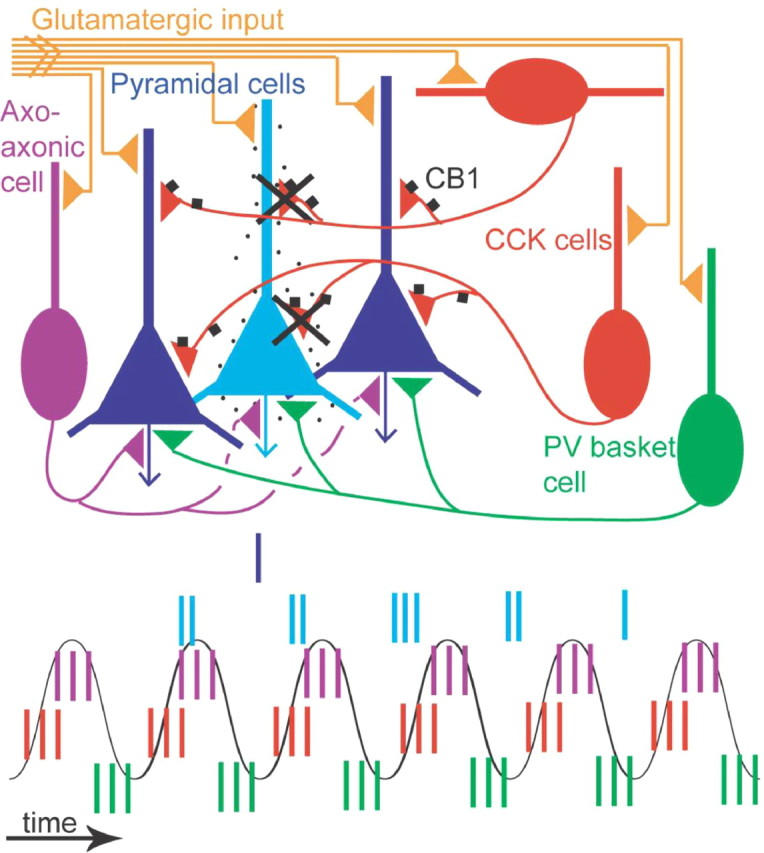Figure 8.

Hypothetical contribution of CCK-expressing interneurons to sparse coding by CA1 pyramidal cells during theta oscillations. The majority of pyramidal cells (dark blue) are silent as the animal explores a given place, whereas place cell (light blue) firing is theta modulated (spikes, vertical lines over a schematic theta wave). As the rat enters the place field of a pyramidal cell, the neuron starts to fire before the peak of the theta wave. The cell fires at gradually earlier phases during consecutive theta cycles. It is assumed that all pyramidal cells receive GABAergic input from PV-expressing basket cells (green), axo-axonic cells (purple), and several types of CCK-expressing cell (red). The PV basket cells fire, on average, before the place cells fire. The CCK-expressing interneurons fire, on average, at the ascending theta phase, at the same time when place cells start to fire. Thus, the glutamatergic excitation of place cells (yellow) must overcome the peak of inhibition by CCK-expressing and axo-axonic cells for the cell to start firing as the animal enters the place field. Only CCK-expressing cells have CB1 receptors on their presynaptic boutons (black squares), and when activated, these suppress GABA release. Place cells often fire complex spikes early in the place field leading to strong calcium influx, which in cooperation with muscarinic acetylcholine receptor activation would lead to the formation of endocannabinoids and a reduction of GABA release from only those CCK terminals that innervate the place cell. The CCK-expressing interneurons will fire and continue to release GABA to the majority of pyramidal cells, which are silent, keeping a high threshold for activation. In contrast, the place cell continues to fire with high frequency as a result of decreased inhibition and increasing excitation. Thus, the specific spike timing of CCK-expressing interneurons during theta oscillations and the expression of cannabinoid receptors on their terminals contribute to increasing the difference in firing between activated and nonactivated pyramidal cells.
